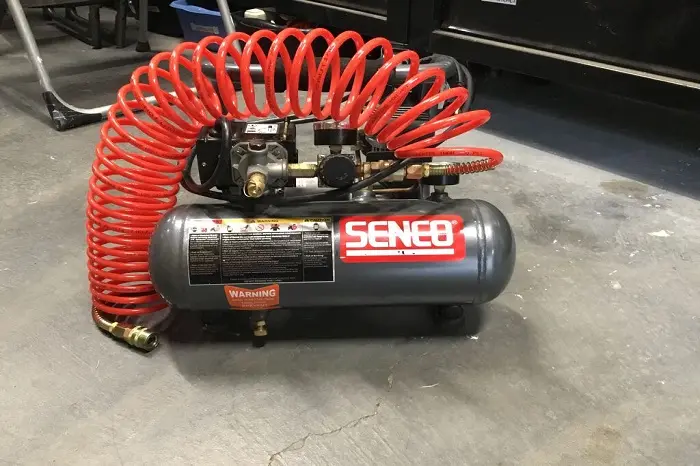Air compressors are essential tools in various industries, providing the compressed air necessary for powering tools, inflating tires, and more. Among the crucial components of an air compressor is the regulator, which plays a vital role in ensuring optimal performance. Understanding what a regulator does and how it affects air compressor operation is essential for users and technicians alike. This article delves into the functions of a regulator, its types, and how to maintain it for optimal performance.
Understanding Air Compressors
Before exploring the regulator’s role, it’s important to understand how air compressors work. An air compressor converts power into potential energy stored in pressurized air. This air is then used for a variety of applications, from powering pneumatic tools to inflating tires.
Key Components of an Air Compressor
Compressor Pump: The heart of the system, responsible for compressing air.
Tank: Stores the compressed air for later use.
Motor: Drives the compressor pump.
Regulator: Controls the pressure of the air being released from the tank.
Pressure Switch: Turns the compressor on and off based on the tank’s pressure.
What is a Regulator?
A regulator is a mechanical device that controls the pressure of the air released from the compressor tank. It ensures that the output pressure remains consistent and within a desired range, regardless of variations in demand from the tools or equipment being powered.
Why is Pressure Regulation Important?
Maintaining the correct air pressure is critical for several reasons:
Tool Performance: Different pneumatic tools require specific pressure levels to operate effectively. Too high or too low pressure can impair tool performance.
Safety: Regulating pressure helps prevent dangerous over-pressurization, which can lead to equipment failure or even accidents.
Efficiency: Properly regulated air pressure reduces energy waste, enhancing overall system efficiency.
How Does a Regulator Work?
A regulator operates using a simple mechanical principle: it adjusts the flow of air based on the downstream pressure. Here’s a closer look at its working mechanism:
Input Pressure: The regulator receives compressed air from the tank, which is at a higher pressure.
Diaphragm Action: Inside the regulator, there is a diaphragm that moves in response to pressure changes. When the downstream pressure decreases (e.g., when a tool is activated), the diaphragm opens to allow more air to flow.
Setting Desired Pressure: Users can set the desired output pressure using an adjustment knob or screw. The regulator maintains this pressure by modulating the airflow as needed.
Output Pressure: The air is then released at the regulated pressure, which is typically lower than the input pressure from the tank.
Types of Regulators
Air compressor regulators come in various types, each suited to specific applications. Here are the most common types:
1. Single-Stage Regulators
Function: These regulators adjust pressure in one step.
Application: Suitable for applications with relatively stable pressure requirements.
2. Two-Stage Regulators
Function: These regulators have two stages of pressure reduction, providing more precise control.
Application: Ideal for applications that require very stable pressure, such as painting or precise pneumatic tools.
3. Electronic Regulators
Function: Use sensors and electronic controls to maintain pressure levels automatically.
Application: Commonly used in industrial settings where precise pressure control is essential.
Benefits of Using a Regulator
Incorporating a regulator into an air compressor system offers numerous advantages:
1. Enhanced Tool Performance
Regulators ensure that pneumatic tools receive the correct pressure, leading to improved performance and longevity.
2. Safety
Regulating pressure prevents over-pressurization, reducing the risk of equipment failure and accidents.
3. Energy Efficiency
Proper pressure regulation helps minimize energy consumption, leading to cost savings.
4. Flexibility
Users can easily adjust the output pressure to suit various applications, making air compressors versatile tools.
How to Adjust a Regulator
Adjusting a regulator is a straightforward process, but it’s essential to follow these steps to ensure accuracy and safety:
Turn Off the Compressor: Always turn off the compressor before making adjustments.
Release Air Pressure: Use the pressure relief valve to release any residual air pressure in the system.
Locate the Adjustment Screw: Find the adjustment screw or knob on the regulator.
Make Adjustments: Turn the screw clockwise to increase pressure and counterclockwise to decrease pressure.
Test the Output Pressure: Turn on the compressor and test the output pressure using a gauge. Adjust as necessary until the desired pressure is achieved.
Common Problems with Regulators
Despite their reliability, regulators can experience issues over time. Here are some common problems and their solutions:
1. Inconsistent Pressure Output
Causes: This may be due to a malfunctioning diaphragm or debris blocking the airflow.
Solution: Inspect the diaphragm and clean or replace it as needed.
2. Pressure Drop
Causes: A drop in pressure could indicate a leak in the system or an improperly adjusted regulator.
Solution: Check for leaks in hoses and fittings. Adjust the regulator if necessary.
3. Failure to Adjust Pressure
Causes: A stuck adjustment screw or damaged internal components can prevent proper adjustment.
Solution: Lubricate or replace the adjustment screw and inspect internal parts for damage.
Maintenance Tips for Regulators
Regular maintenance ensures optimal performance and longevity of the regulator. Here are some best practices:
Regular Inspections: Periodically check the regulator for leaks and signs of wear.
Clean Filters: If your system has air filters, clean or replace them regularly to prevent debris from entering the regulator.
Check Connections: Ensure all connections are tight and free of leaks.
Lubrication: Apply lubrication to moving parts as recommended by the manufacturer.
Replace Worn Parts: Replace any worn or damaged components to maintain proper function.
Conclusion
A regulator is a critical component of an air compressor system, playing a vital role in controlling air pressure for various applications. Understanding how a regulator works, its types, and maintenance requirements can significantly enhance the performance and efficiency of air compressor systems.
By ensuring proper pressure regulation, users can enjoy improved tool performance, enhanced safety, and increased energy efficiency. Whether you’re a DIY enthusiast or a professional tradesperson, knowing how to use and maintain your air compressor’s regulator will help you achieve optimal results in your projects.
Related topics:

